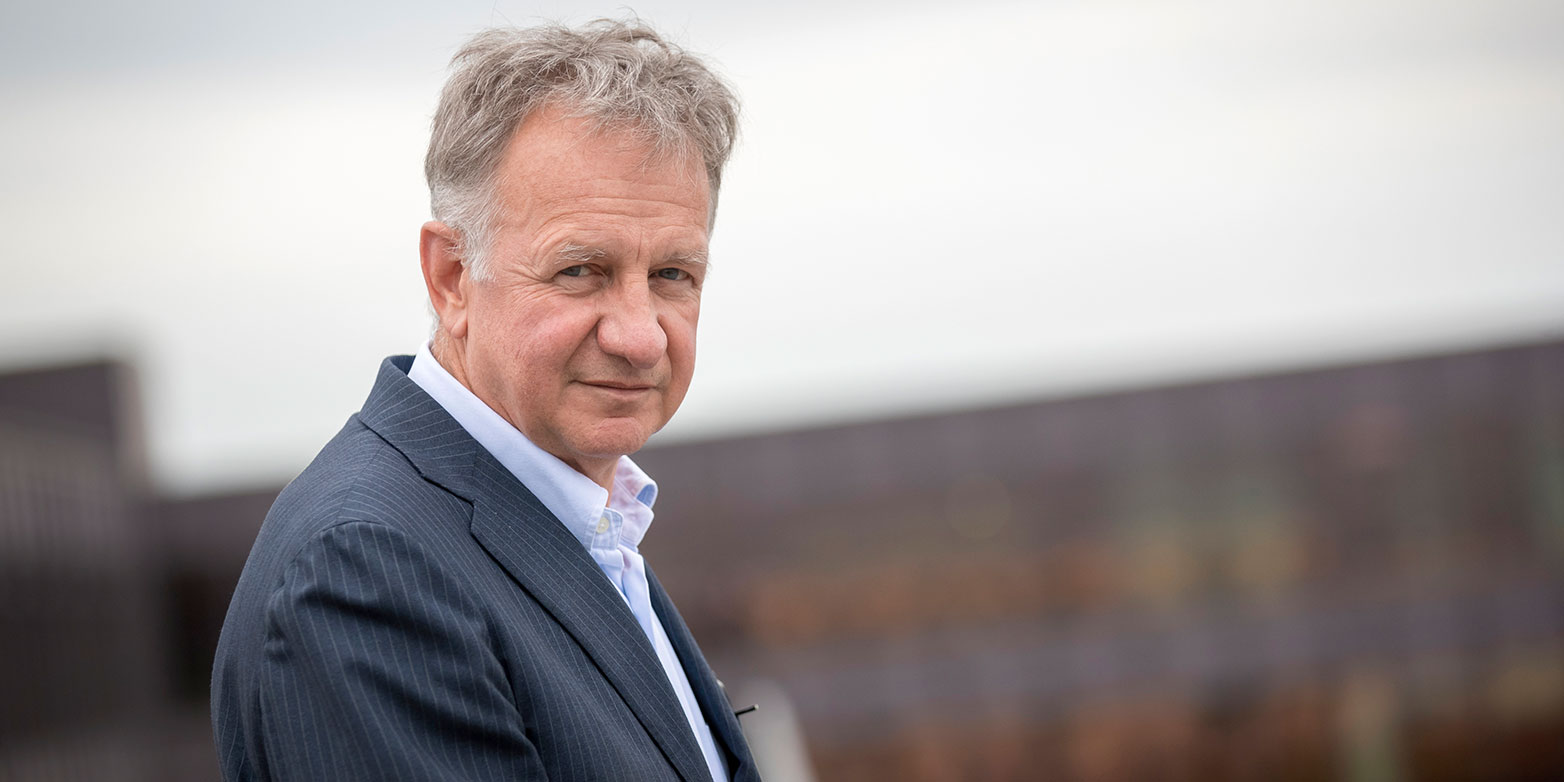A planner and firm believer in Swiss democracy
As a spatial planner, Bernd Scholl spent his career planning how to design areas for the future. His search for comprehensive solutions involving transport, settlement and landscape made him a resolute supporter of Switzerland’s direct democratic system. Portrait of a passionate spatial developer.

When Bernd Scholl looks up from his desk, his gaze meets a big picture hanging in his office on the Hönggerberg campus, which shows the eastern Viennese suburbs. The spacious, linear infrastructure stands out among the mass of buildings: bridges, stations and motorways. Among them is the Vienna Gürtel (Beltway), one of the most-travelled inner-city streets in Europe. However, the most striking feature is the river Danube.
Vienna was a seminal experience for Bernd Scholl as a young spatial planner. It was the beginning of the 1980s and Scholl was an assistant at ETH Zurich. Vienna was busy constructing the “New Danube” to improve the city’s protection from flooding. The planners also designed a leisure and recreation area in the 21 km long stretch of river, including Danube Island. It is accessible by public transport and benefits the city's outer suburbs to this day.
“It was a revelation to me to see that a flood protection project could be turned into a central recreation area and contribute to reducing traffic congestion”, recalls the Professor of Spatial Development who gives his final lecture on 23 May. The Vienna experience taught him that infrastructure and urban development projects must be approached and defined from a holistic perspective, incorporating the bigger picture.
A vision of the future
The “forward-looking coordination of spatially relevant activities” is the typical aspect of spatial planning that sets it apart from other disciplines and professions. That involves creating ideas for the future development of a specific area and discussing them with politicians and the people: “Ultimately, we are dealing with the future of an inhabited area, and that matters to the people living there.”
Communications and negotiation skills are important to spatial planners: “Just about every subject related to spatial planning can cause conflict”, says Scholl, “because different groups have different interests and demands on how to use a given area of land where expansion is not an option.” He expects these discussions to become even more challenging in future as digital methods of accessing information and networking increase demand for communication.
A supporter of direct democracy
As Scholl says: “I am a strong believer in direct democracy, as it obliges planners and decision-makers to show their hand and be open.” This does not apply to the same extent even in representative democracies, Germany for example: “It encourages me as a spatial planner to translate complex, technical connections into layman’s language as it pins down what they really mean.”
His time as a student and assistant coincided with the “formative years of modern spatial planning” in Switzerland. ETH Zurich and Scholl’s PhD supervisor Jakob Maurer laid the foundations in the 1970s of spatial and structural planning today. The cantons use structure plans to coordinate major infrastructure and construction projects with each other based on a long-term perspective.
Scholl finds that Switzerland still has very modern spatial planning law, even if it leaves some open questions in terms of its implementation. “Nonetheless the Swiss population did accept that settlements should develop from within when the Spatial Planning Act was last revised in 2013. No other country in Europe has done that.” Just this question: how to limit the expansion of residential areas into the countryside elicited an academic response from Scholl: “I always imagined that it would help communities which wanted to develop from within to have an overview of their available surface area reserve.”
Scholl’s group initiated cooperation with the cantons and communities in 2006 to establish a factual basis for a regional settlement area. “Today, this method we call “Raum+” (Space+) to establish settlement area reserves, has been introduced in twelve cantons and over 300 communities. They can all acquire an overview at the push of a button.”
In the past 20 years, informal planning procedures have become more widespread as a complement to the formal processes, such as structure and zone planning, says Scholl. One example, developed by Scholl himself, is test planning. This involves examining an area’s development potential and establishing an objective in cooperation with planning teams, experts from various disciplines and politicians.
Test plannings for Dübendorf und Attisholz
Scholl conducted such test plannings for Dübendorf airport and the Attisholz district, the biggest Swiss industrial fallow area in the Solothurn communities of Riedholz and Luterbach. He was surprised at how quickly the test plans yielded results: an American biotech company sets up its main European production plant in Attisholz, the Innovation Park is placed in Dübendorf.
“These decisions wouldn't have been made so quickly without having the test plannings as a basis”, says Scholl. He also played a key role in the initiation of cross-border planning in the Limmattal, an area of national significance: “We launched an ideas competition there, resulting in a joint development perspective called ‘Regionale 2025’.”
As a professor in Zurich and at the University of Karlsruhe before that, Scholl led major planning projects in Frankfurt, Milan, Stuttgart, Budapest and the integrated traffic and spatial development for the transport corridor between Rotterdam and Genoa, including the New Rail Link through the Alps NEAT (NRLA). Now on the threshold of retirement, he would like to visit these areas and see “the end result of the planning”.
Comments
No comments yet